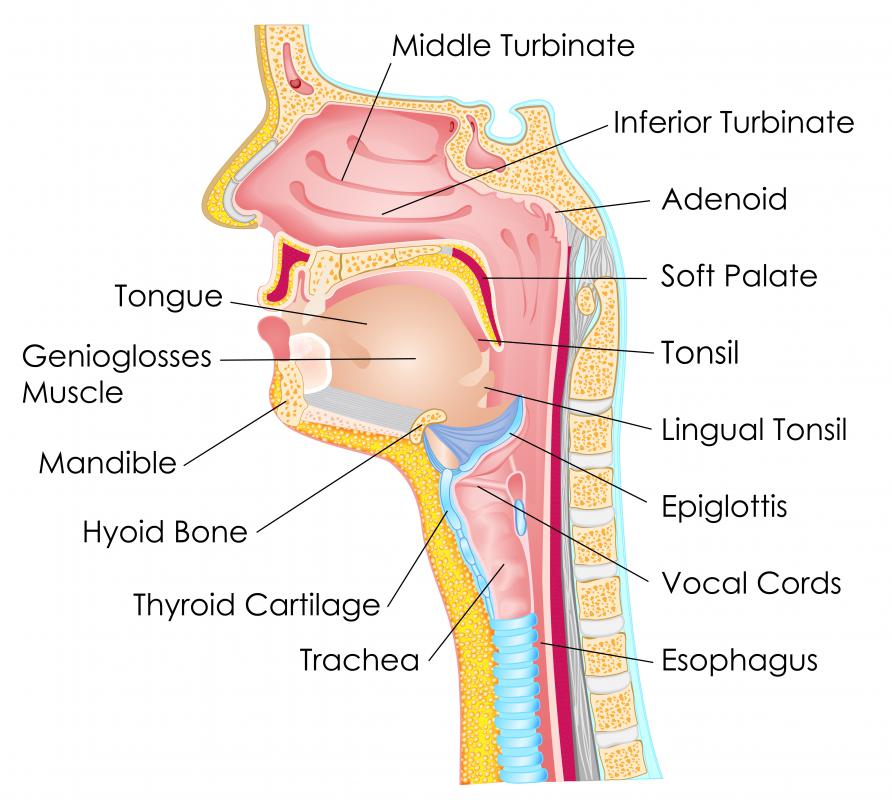At WiseGEEK, we're committed to delivering accurate, trustworthy information. Our expert-authored content is rigorously fact-checked and sourced from credible authorities. Discover how we uphold the highest standards in providing you with reliable knowledge.
What is the Digastric?
The digastric muscle, also known as the digastricus, is a muscle with two bellies. This muscle is located just under the jaw. The primary function of the digastric muscle is to elevate the hyoid bone. The hyoid is a small bone resembling a horseshoe and is located between the thyroid cartilage and the chin. The digastric muscle helps to open the mouth by depressing the mandible, or lower jaw.
The digastric muscle is found underneath the mandible. From there, it extends from the structure known as the mastoid process and then travels to the symphysis menti. The mastoid process is a projection that serves as a point of attachment for several of the facial muscles. The symphysis menti is a small ridge found on the outer surface of the mandible.

The posterior belly of the digastric muscle begins on the surface of the skull and stretches from the mastoid process to the mandible. This muscle then becomes a tendon and attaches itself to the hyoid bone. A branch of the facial nerve known as the digastric branch is responsible for the nerve supply to this portion of the muscle.
The anterior belly of the digastric muscle begins at the lower portion of the mandible and moves in a downward and backward direction. The trigeminal nerve supplies this belly of the muscle through the mylohyoid nerve. The mylohyoid nerve is a branch of the mandibular nerve.

Both bellies of the digastric muscle end in a tendon known as the intermediate tendon. This tendon joins the stylohyoideus muscle and is also supplied by the facial nerve. This muscle is connected to the body from a loop made of fibrous tissue. There are natural variations in regard to the stylohyoideus muscle. In some cases, this muscle may be missing altogether, and in other patients the muscle can actually be doubled.

As with any other muscle in the body, the digastricus can be prone to injury. This can be due to such things as traumatic injury, natural disease, or even overuse. For mild to moderate pain or discomfort, applying ice to the affected area can often be helpful. Over-the-counter medications such as ibuprofen or acetaminophen can also reduce painful symptoms. A medical professional should be consulted when any facial pain is present in order to ensure proper diagnosis and treatment. Depending on the extent of the injury, surgery to repair the muscle and surrounding tissues sometimes becomes necessary.
AS FEATURED ON:
AS FEATURED ON:













Discuss this Article
Post your comments